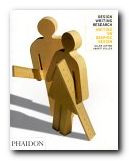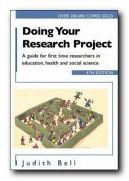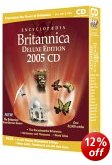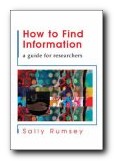a dictionary which is also an encyclopedia
There’s a great deal of competition amongst dictionaries and encyclopedias these days. You can buy the New Oxford Dictionary for the price of a couple of hardback books; Encarta comes cheap enough; and you can even get the whole of Encyclopedia Britannica on disk for less than a tenner. So any serious contender as a desktop reference work must have something special to offer in order to be taken seriously. And the Bloomsbury Concise Dictionary does that by packing in an amazing number of extra features – which is what makes it something of a hybrid, combining the basic data you expect in a conventional dictionary with some of the features of an encyclopedia.
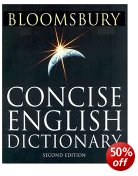 It offers what it calls ‘quick definitions’, which are summaries of the different meanings a word can have. These are useful for navigating through longer entries. Almost every entry is also given a cross reference or labelled with a category to which it belongs. I think I see the influence of hyperlinking at work here. In fact there is quite a lot of visual novelty, because font size, emphasis, and bullet points are used to guide you through the explanations of terms.
It offers what it calls ‘quick definitions’, which are summaries of the different meanings a word can have. These are useful for navigating through longer entries. Almost every entry is also given a cross reference or labelled with a category to which it belongs. I think I see the influence of hyperlinking at work here. In fact there is quite a lot of visual novelty, because font size, emphasis, and bullet points are used to guide you through the explanations of terms.
The most obvious feature which stands out and I think makes the book attractive is the use of illustrations, maps, tables, and diagrams. It’s obviously more helpful to show a map of the Czech Republic, rather than describing where it is geographically.
For those people who want to use a dictionary to help them improve their use of English, there are all sorts of aids to language and its problems. There is a spellcheck feature which draws attention to words whose spelling is unusual or problematic. Words are placed into a context to demonstrate how they are correctly used. There are notes on grammar, pronunciation, and issues of style and levels of formality. A typical entry runs as follows:
intrigue n/in treeg, in treég/ 1 SECRET PLOTTING secret scheming or plotting 2 SECRET PLOT a secret scheme or plot 3 SECRET LOVE AFFAIR a secret love affair (archaic) • v/in treeg/ (-trigues, -triguing, -trigued) 1 vt INTEREST to make somebody greatly interested or curious 2 vi SCHEME to scheme or use underhand methods to achieve something [Early 17C Via French < Italian intrigo < intrigare ‘entangle’ < Latin intricare (see INTRICATE) —intriguer /in treegar/ n —intriguingly vi
In terms of lexicon, the main body of the work is drawn from the Bloomsbury Corpus of World English, which now has a database of over 150 million words. There is a substantial proportion of recently-coined terms in evidence – so you can be confident of finding (for instance) an explanation of the technological sense of backbone [the core of an electronic network] along with its biological sense of ‘spinal column’.
And if all that isn’t enough, there are also panels giving what they call ‘quick facts’ on subjects such as the Baroque period in architecture and the Human Genome project. These give the key names, dates, publications, and technologies involved. So, with 220,000 word definitions and 8,000 entries on people and places, I doubt if it would be possible to pack much more into a desktop reference book of this kind.
© Roy Johnson 2005
Bloomsbury Concise English Dictionary, London: A & C Black, 2nd edn, 2005, pp.1687, ISBN: 0713674997
More on language
More on literary studies
More on writing skills
More on creative writing
More on grammar
